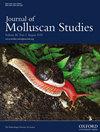Effect of culture depth on the shell thickness of the blue mussel Mytilus edulis: a practical case study comparing direct and indirect methods of measurement
IF 1.2
4区 生物学
Q2 MARINE & FRESHWATER BIOLOGY
引用次数: 1
Abstract
Mytilus species have a fundamental role in coastal environments and constitute an important aquaculture resource. Their shell has a protective function and is affected by multiple factors, such as the size of the animal, density, environmental characteristics and presence of predators. It is crucial to accurately estimate shell thickness in order to understand the effects of the ever-changing environment on mussel physiology, morphology and ecology. This study compares a newly developed direct method for measuring shell thickness, using scanning electron microscopy (SEM), and a widely used indirect method (shell thickness index, STI), in the context of a practical case study of the blue mussel Mytilus edulis. In this study, STI did not appear as highly correlated to direct thickness measurement as in previous studies. This study also showed a weaker relationship between measured shell length and STI. In the case study, assessing the effect of culture depth on M. edulis growth and condition, STI showed a significant variation with depth, while SEM measured thickness did not. Therefore, the choice to use STI vs direct measurement of shell thickness drastically changed the results and interpretation of the case study. This work highlights the importance of a carefully designed method for measuring shell thickness and emphasizes that, before application, indirect methods should be quality controlled for the population studied. However, when high precision is needed for shell thickness measurements the application of SEM-based techniques may be necessary. This is the first study where SEM-based techniques have been used to measure shell thickness in M. edulis.培养深度对蓝贻贝贝贝壳厚度的影响——一个比较直接和间接测量方法的实例研究
Mytilus物种在沿海环境中发挥着重要作用,是一种重要的水产养殖资源。它们的外壳具有保护功能,受到多种因素的影响,如动物的大小、密度、环境特征和捕食者的存在。为了了解不断变化的环境对贻贝生理、形态和生态的影响,准确估计外壳厚度至关重要。本研究比较了一种新开发的使用扫描电子显微镜(SEM)测量贝壳厚度的直接方法和一种广泛使用的间接方法(贝壳厚度指数,STI),并结合蓝贻贝的实际案例研究。在这项研究中,STI与直接厚度测量的相关性似乎没有以前的研究那么高。这项研究还表明,测量的外壳长度与STI之间的关系较弱。在评估培养深度对M.edulis生长和条件的影响的案例研究中,STI显示出随深度的显著变化,而SEM测量的厚度则没有。因此,选择使用STI与直接测量壳体厚度相比,极大地改变了案例研究的结果和解释。这项工作强调了精心设计的外壳厚度测量方法的重要性,并强调在应用之前,应对所研究人群的间接方法进行质量控制。然而,当壳体厚度测量需要高精度时,可能需要应用基于SEM的技术。这是首次使用基于SEM的技术来测量M.edulis外壳厚度的研究。
本文章由计算机程序翻译,如有差异,请以英文原文为准。
求助全文
约1分钟内获得全文
求助全文
来源期刊

Journal of Molluscan Studies
生物-动物学
CiteScore
3.00
自引率
8.30%
发文量
36
审稿时长
3 months
期刊介绍:
The Journal of Molluscan Studies accepts papers on all aspects of the study of molluscs. These include systematics, molecular genetics, palaeontology, ecology, evolution, and physiology. Where the topic is in a specialized field (e.g. parasitology, neurobiology, biochemistry, molecular biology), submissions will still be accepted as long as the mollusc is the principal focus of the study, and not incidental or simply a convenient experimental animal. Papers with a focus on fisheries biology, aquaculture, and control of molluscan pests will be accepted only if they include significant advances in molluscan biology. While systematic papers are encouraged, descriptions of single new taxa will only be considered if they include some ‘added value’, for example in the form of new information on anatomy or distribution, or if they are presented in the context of a systematic revision or phylogenetic analysis of the group.
 求助内容:
求助内容: 应助结果提醒方式:
应助结果提醒方式:


